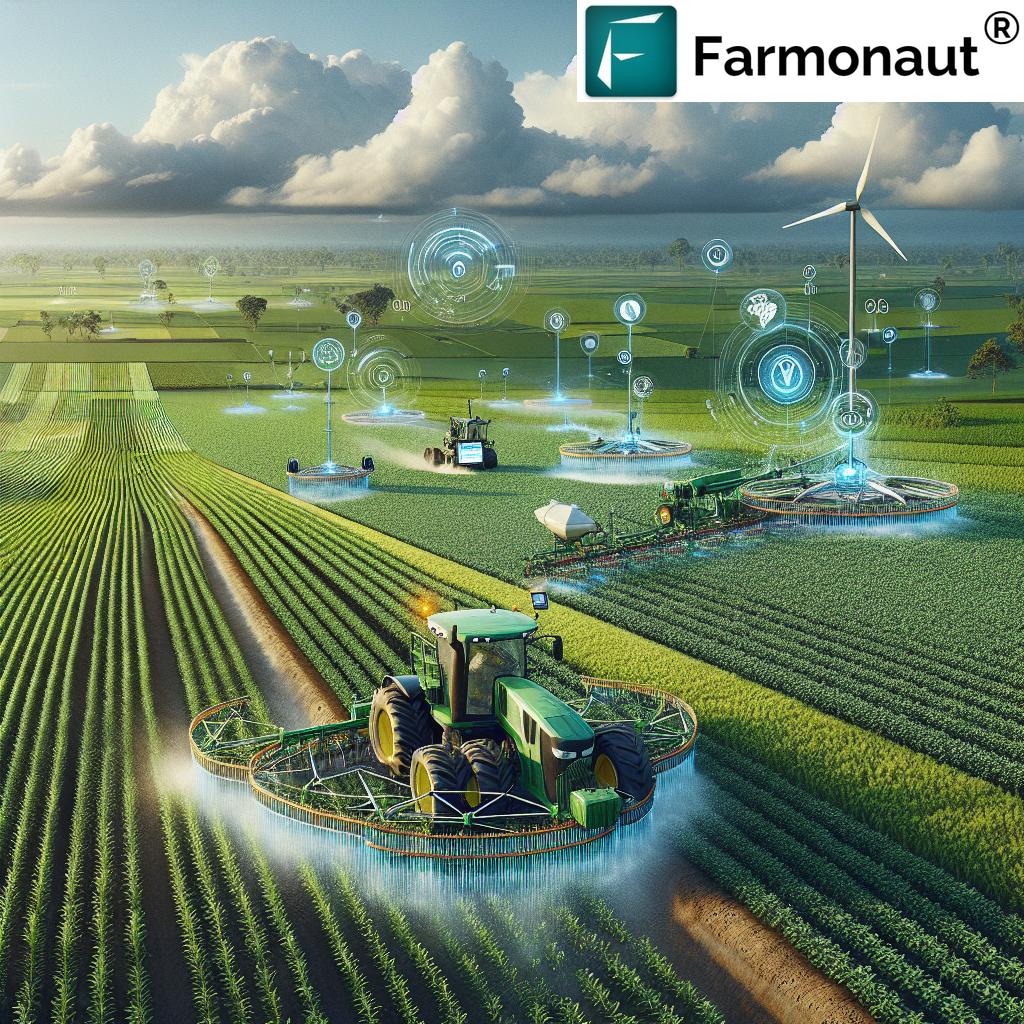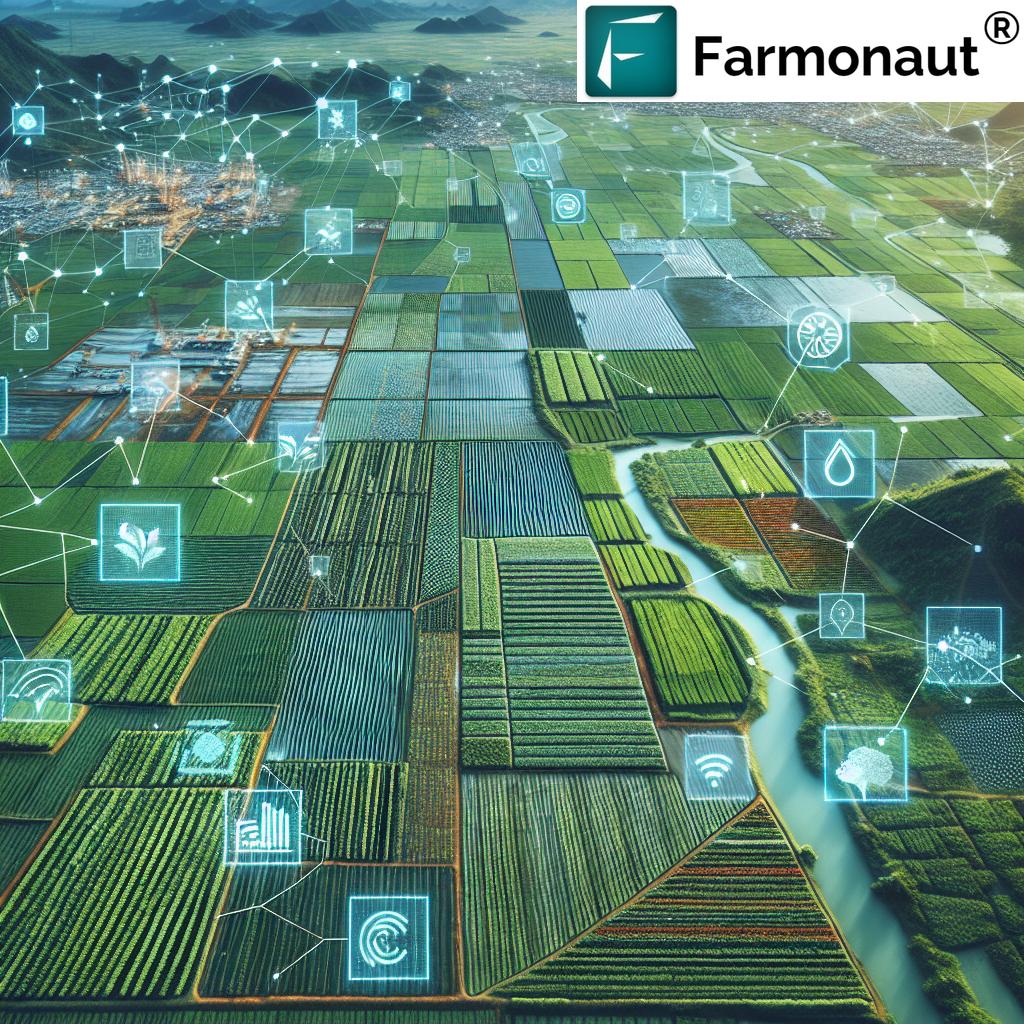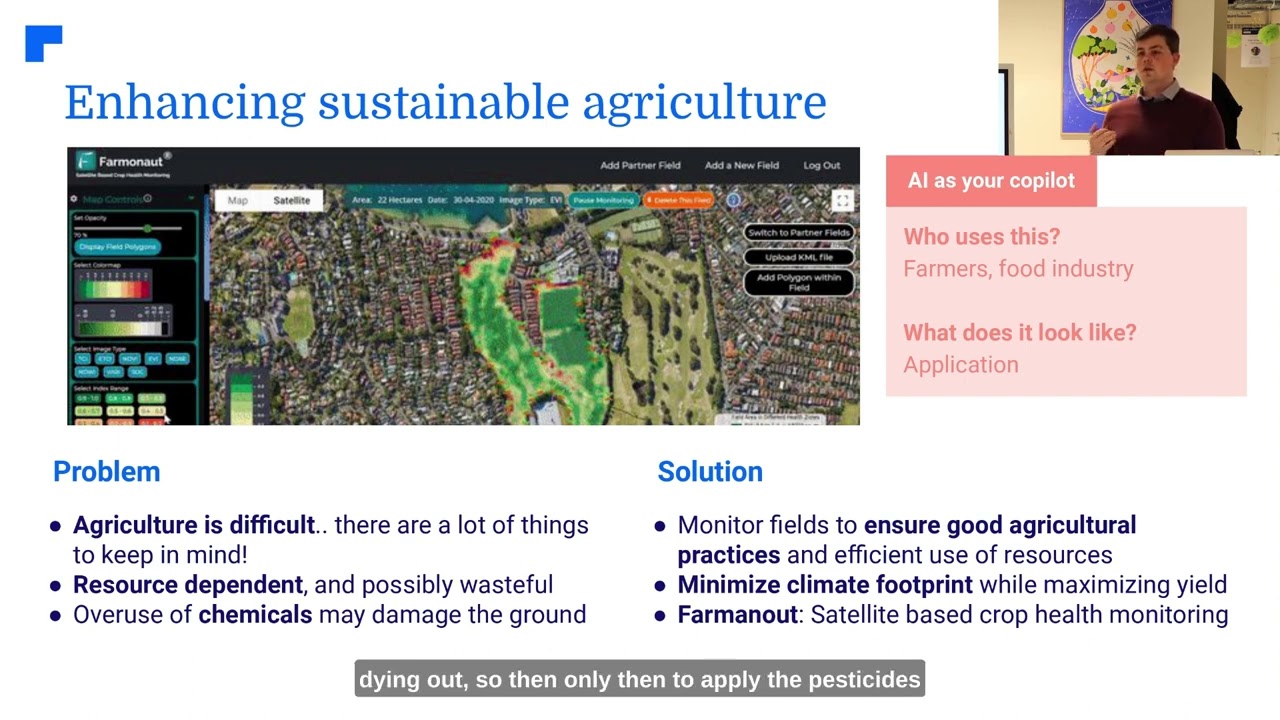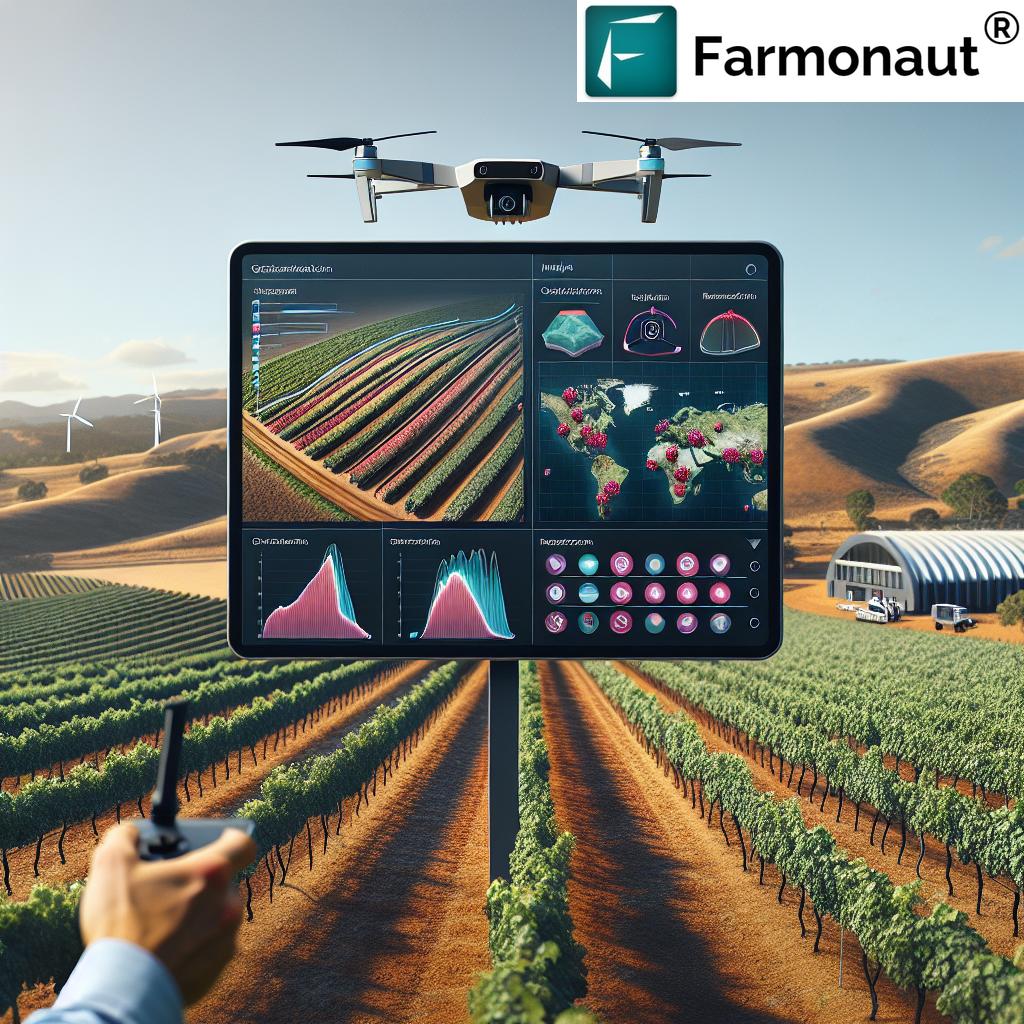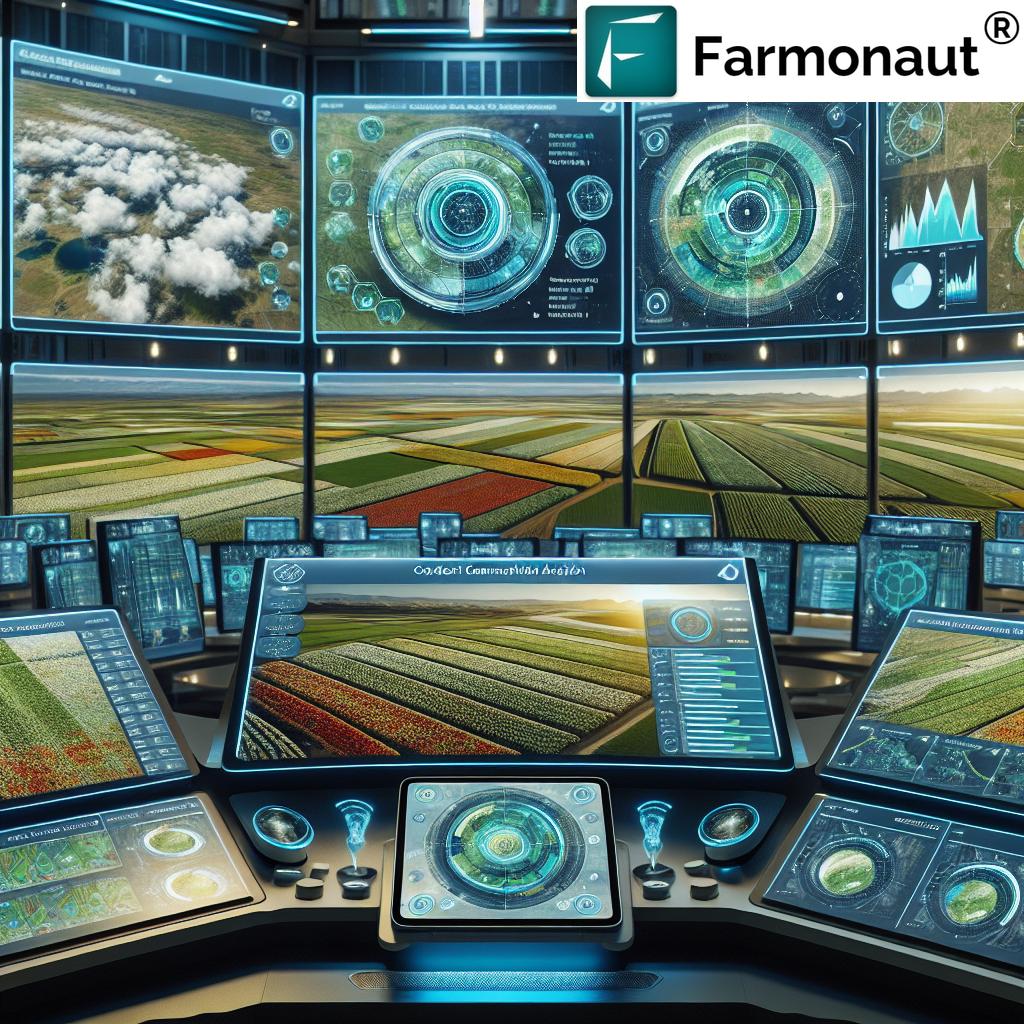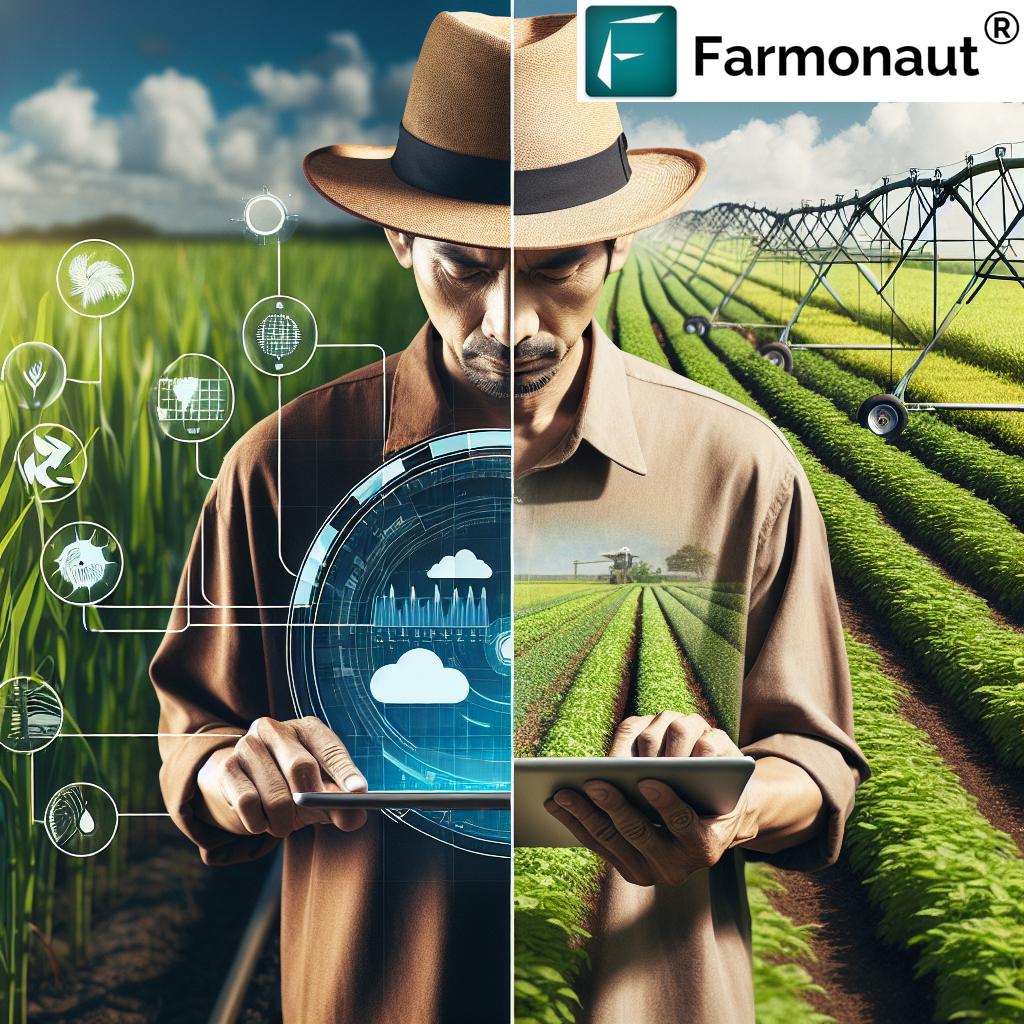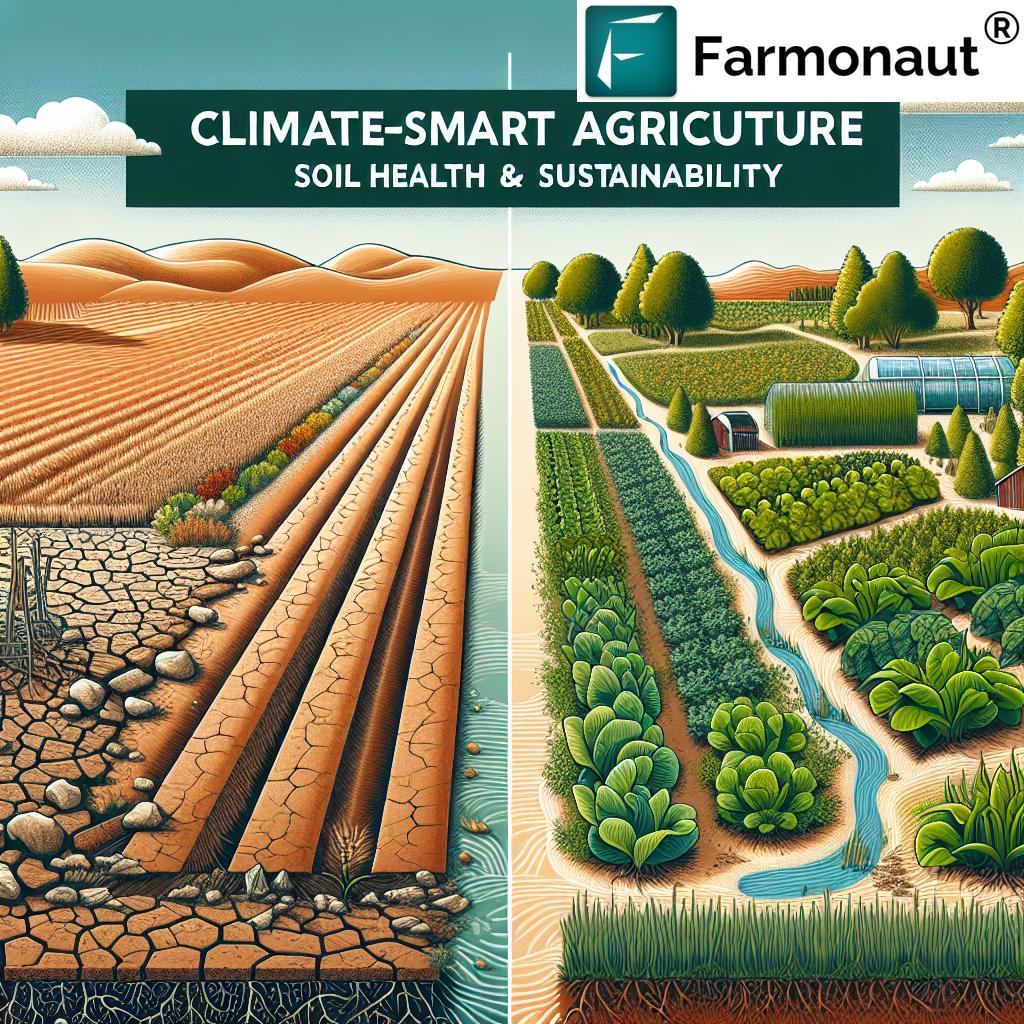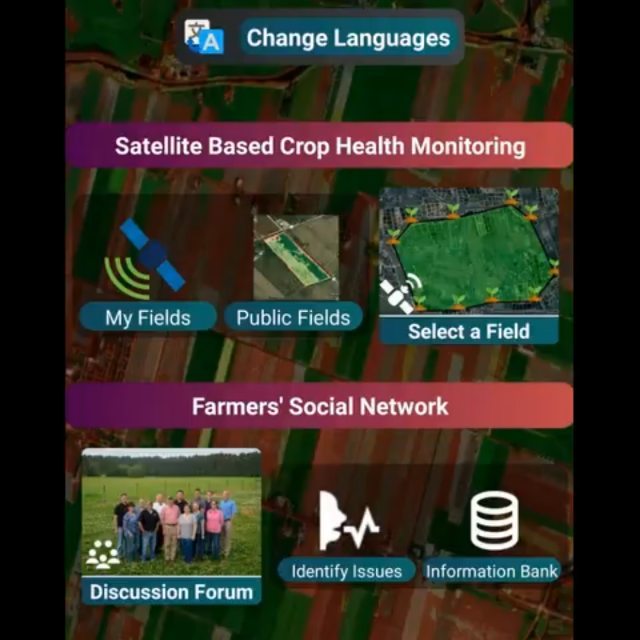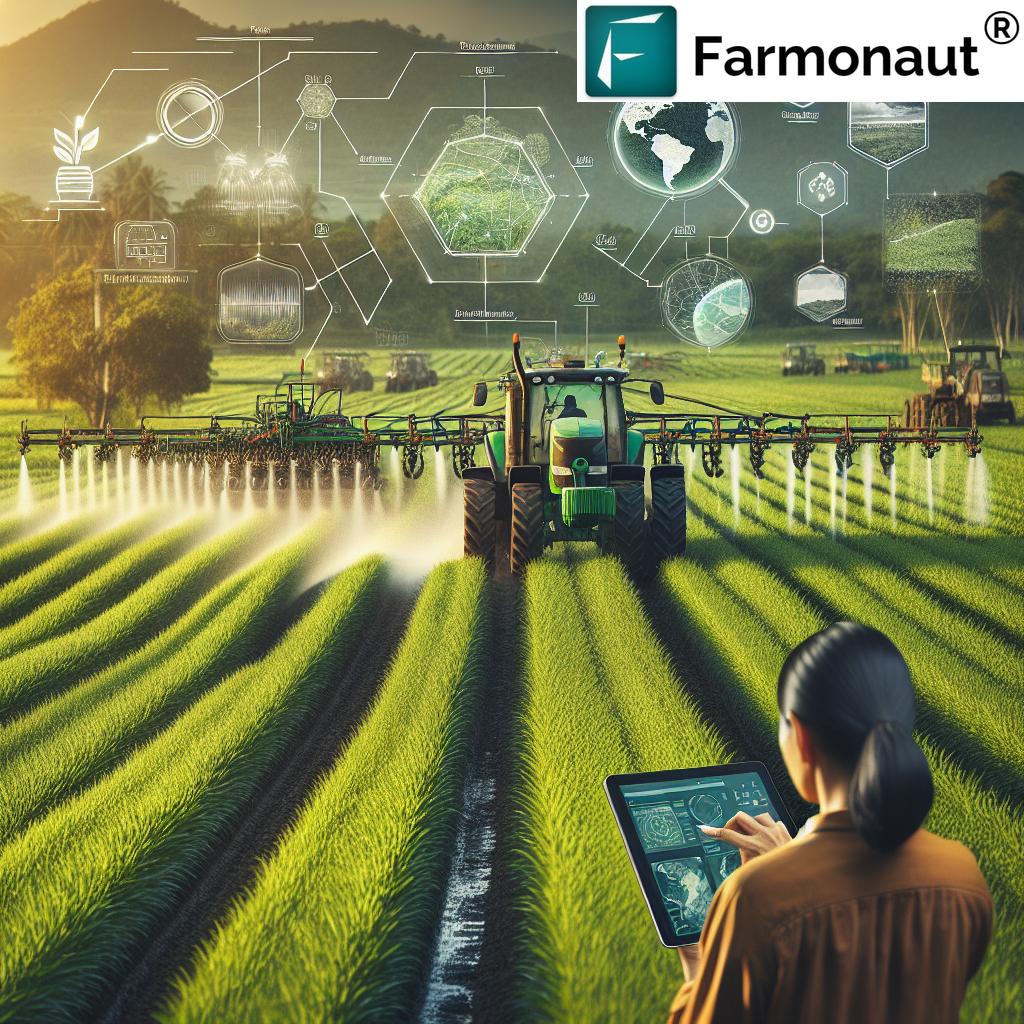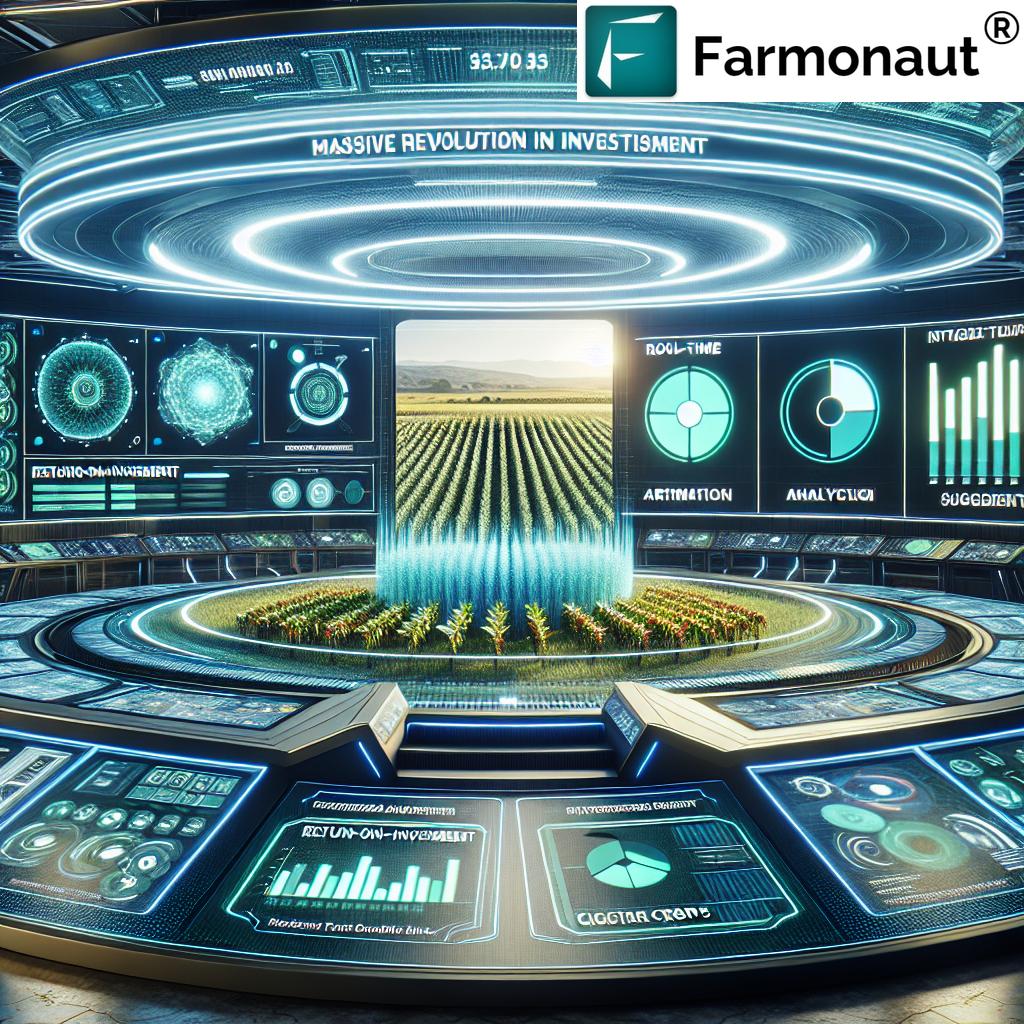Precision Agriculture: Sustainable Rainfed Farming Innovations
“Precision agriculture can increase rainfed crop yields by up to 20% using advanced data-driven decision tools.”
Introduction
In today’s rapidly evolving agricultural landscape, precision agriculture, sustainable agriculture, and rainfed agriculture have emerged as foundational concepts aimed at revolutionizing farming practices. As we face pressing challenges—growing food demands, mounting environmental concerns, and resource scarcity—it is more crucial than ever to embrace advanced, data-driven tools and strategies that enhance efficiency, optimize water and soil health, and improve productivity and yields.
In this comprehensive guide, we’ll explore how precision agriculture leverages innovative technologies—such as remote sensing, IoT devices, drones, satellite imagery, and GPS-guided equipment—to strengthen the connections between sustainable agriculture and modern rainfed systems. We’ll also examine how companies like Farmonaut are bridging technological gaps on a global scale, making precision solutions accessible and cost-effective for farmers from Sub-Saharan Africa to East Asia.
Understanding Precision Agriculture: The Backbone of Modern Farming Sustainability
Precision agriculture (PA) is an innovative farm management concept that utilizes advanced technologies such as satellite remote sensing, GPS, IoT sensors, and drones to monitor and optimize agricultural processes. By collecting and analyzing real-time data, we can fine-tune crop management, resource allocations, and decision-making—minimizing waste while maximizing efficiency, yields, and sustainability.
Why Precision Agriculture Matters
- It empowers us to use resources like water and soil more efficiently.
- Reduces dependency on guesswork by promoting data-driven crop management.
- Supports environmental sustainability in farming by decreasing unnecessary fertilizers and pesticides use.
- Helps stabilize yields, especially in rainfed regions affected by variable rainfall and climate change.
- Offers scalable solutions for both smallholder and large commercial farming systems.
Key Components & Technologies of Precision Agriculture
Let’s break down the essential components and innovative technologies shaping precision agriculture today:
Remote Sensing & Satellite Imagery
We utilize remote sensing tools and satellite imagery—especially those offered by providers like Farmonaut—for crop and soil health monitoring. Through multispectral imaging, we can detect plant stress, monitor vegetation growth (NDVI), and assess soil moisture—enabling precise and targeted action.
- Spot issues early—stress, drought, pest, or disease outbreaks.
- Optimize application of inputs & prevent resource wastage.
- Monitor large or fragmented farming systems cost-effectively.
Drones in Crop Health Assessment
Drones equipped with multispectral cameras are transforming crop monitoring technologies, offering detailed, high-frequency imagery for analyzing plant health, pest damage, or even growth stages at the level of individual plants or plots.
- Enables precision mapping of issues within fields.
- Supports variable rate applications for pesticides and fertilizers.
GPS-Guided Equipment & Variable Rate Technology (VRT)
GPS-guided machinery ensures accurate planting, fertilizing, and harvesting, drastically reducing input waste and minimizing errors. Variable Rate Technology (VRT) allows us to administer fertilizers, pesticides, and water in site-specific, need-based quantities.
- Applications: Uniform seed depth, spaced planting, and optimized resource delivery.
- Benefits: Reduced input usage and improved yields through site-specific management.
VRT is a powerful example of resource efficiency in agriculture.
“Sustainable precision techniques can reduce water usage in rainfed farming by as much as 30% while maintaining soil health.”
IoT Devices & Soil Moisture Sensors
Internet of Things (IoT) devices, including soil moisture sensors, offer continuous and granular monitoring of critical parameters. Paired with smart precision irrigation systems, these solutions ensure water is delivered precisely when and where it’s most needed—driving significant input cost savings and yield benefits.
- Example: Farmonaut’s satellite-based soil moisture analytics enables farmers to optimize irrigation schedules remotely, especially beneficial in rainfed regions of Africa, East Asia, and beyond.
Data Collection, Analysis, and AI-Based Insights
Modern agriculture is defined by our ability to collect, analyze, and act upon massive volumes of data—on crop conditions, weather, soil health, and pest pressures. Platforms like Farmonaut play a vital role by integrating AI-powered decision support, blockchain traceability, and resource management tools.
-
Carbon Footprinting Solutions:
Offers farm-level emission tracking, helping us promote sustainability and comply with environmental standards in large-scale and smallholder settings. -
Blockchain-Based Traceability:
Ensures every stage of a product’s journey is visible, which is critical for transparent and sustainable food supply chains.
The Role of Sustainable Agriculture: Balancing Productivity and Environmental Conservation
Sustainable agriculture is the philosophy and practice of meeting today’s food needs without compromising the ability of future generations to meet theirs. It integrates three crucial pillars: environmental health, economic profitability, and social equity.
Did you know? Farmonaut’s blockchain-based traceability solutions (learn more) ensure transparent, tamper-proof records for agri supply chains—enabling food brands and farmers to build trust, ensure sustainability, and streamline certification for both local and global markets.
Foundational Principles of Sustainable Agriculture
- Resource efficiency in agriculture: Using water, energy, and inputs wisely to minimize waste and environmental burden.
- Biodiversity Conservation: Cultivating genetic diversity and diverse cropping patterns to enhance ecosystem resilience.
- Soil Health Management: Incorporating practices like crop rotation, reduced tillage, and organic amendments for long-term soil fertility and structure.
- Economic Viability: Ensuring fair farmer livelihoods and profitability for ongoing community prosperity.
Precision agriculture is a powerful enabler of these goals, supplying us with actionable data and management tools to optimize every aspect of farming systems while advancing environmental sustainability in farming.
Key Benefits: Sustainable Precision Agriculture
- Reduced water and input usage: Smart application via VRT
For example, using precision irrigation systems and soil moisture sensors in rainfed agriculture can reduce water use by up to 40% while improving yields. - Optimized soil conservation: Data-driven practices reduce erosion and enhance long-term soil health improvement.
- Decreased environmental impact: Minimizing excess fertilizers and pesticides enhances food safety and reduces contamination.
- Enhanced crop yields and farmer incomes: Smarter monitoring and inputs allocation increase output without expanding land area.
Rainfed Agriculture: Insights & Challenges
Rainfed agriculture refers to agricultural systems that rely solely on natural rainfall for water, in contrast to irrigated systems. It is predominant in Sub-Saharan Africa (over 95% of cropland), Latin America (90%), East Asia (65%), and many regions of South Asia and the Near East.
Key Challenges Facing Rainfed Systems
- Rainfall variability: Crops can suffer from drought, flood, or unseasonal rains—leading to yield fluctuations.
- Water scarcity: Without irrigation, crops are vulnerable to even short dry spells.
- Soil erosion: Intense rain events often accelerate runoff and soil loss, lowering soil productivity.
- Inconsistent yields: Unpredictable conditions challenge stable food supply and farmer income.
Strategic Importance of Rainfed Agriculture
- Food security: Supports most of the world’s poor and marginal rural communities.
- Large share of cultivation: In rainfed regions, strengthening resilience has immense impact on national food systems.
- Environmental stewardship: Promotes adaptation to climate change and protection of local ecosystems.
Access to finance for rainfed farmers: Farmonaut enables satellite-based crop loan and insurance verification. This reduces fraud, accelerates loan approvals, and improves insurance coverage for vulnerable rainfed communities.
Integrating Precision Agriculture with Rainfed Systems: Innovations for Tomorrow’s Farms
Integrating precision agriculture into rainfed systems is a cornerstone for improving efficiency, resilience, and sustainability—especially in regions like Sub-Saharan Africa, East Asia, and South Asia where millions depend on rain-fed fields.
How Precision Agriculture Empowers Rainfed Farming
- Real-time soil moisture monitoring: Sensors and satellite analytics guide exact irrigation timing or signal when rain is insufficient.
- Optimized fertilizer application: VRT and AI-based tools ensure per-area application matches actual crop needs, maximizing productivity and minimizing runoff.
- Targeted pest management: Remote sensing, drones, and smart advisory systems spot infestations early, reducing crop losses.
- Weather-adaptive crop strategies: Forecasting tools help farmers shift planting and harvesting schedules to minimize climate risk.
- Data-driven planning: Using historical and real-time data, we can make informed choices on crop varieties, planting dates, and resource allocation.
Farmonaut’s Suite of Advanced Tools for Rainfed Agriculture
-
Large-Scale Farm Management:
Helps agribusinesses and cooperatives remotely manage, monitor, and report on even the most fragmented rainfed holdings. -
Fleet and Resource Management Tools:
Optimize agricultural machinery deployment, reducing energy use and input wastage—key to sustainable agricultural productivity. -
Developer APIs:
Seamlessly add satellite and weather data to any custom agri platform for robust crop monitoring and smart advisory delivery. -
API Developer Documentation:
Empower agri-tech developers and research groups with market-leading remote sensing toolkits and crop advisory integration.
Farmonaut: Advanced Tools for Precision and Sustainable Rainfed Farming
Farmonaut has become a trailblazer in offering satellite-based precision solutions that make data-driven crop management affordable for every farmer. This is especially crucial in rainfed regions where resource efficiency is a matter of survival.
- Crop Health Monitoring with Satellites: Farmonaut’s platform makes it easy to monitor vegetation health (NDVI, NDRE), soil moisture, and pest risk, even across large, remote, or difficult-to-access areas.
- Actionable AI-Powered Advisory: The Jeevn AI advisory delivers customized, real-time recommendations based on the latest satellite and weather data, helping to boost yield without inflating input usage.
- Fleet Management Tools: By tracking farm equipment, Farmonaut helps reduce operational costs and supports sustainable logistics on the farm.
- Product Traceability: Blockchain-enabled tracking delivers trust and full transparency from farm to shelf (see Farmonaut’s Traceability Model).
- Real-World Impact: With flexible app- and API-based access, Farmonaut supports all scales of agriculture, making innovative, sustainable, and precision tools a reality worldwide.
With Farmonaut, we unlock the power of precision agriculture and sustainability, building climate-resilient, profitable, and environmentally responsible rainfed farming systems.
Impact of Precision Agriculture Technologies on Rainfed Farming Metrics
Key: Soil Health Improvement Indicator is a normalized index (0–1), showing relative improvement potential. Cost estimates reflect current technology and subscription models globally.
Farmonaut Subscription Options
To empower farmers, agribusinesses, and government agencies with cost-effective, scalable precision agriculture and sustainable management solutions, Farmonaut offers a range of subscription packages. These provide access to:
- Real-time satellite crop health monitoring
- AI-based farm advisory systems
- Blockchain-enabled traceability
- Resource management and fleet tracking
- Carbon footprint tracking and sustainability analysis
Subscriptions are available for individual farmers, cooperatives, agribusinesses, policy makers, and research groups, with flexible pricing based on hectares monitored and update frequency.
Farmonaut’s services are accessible via Android, iOS, and browser apps, with APIs for developers.
Frequently Asked Questions (FAQs)
What is precision agriculture?
Precision agriculture refers to the use of advanced technologies—such as satellite imagery, GPS, IoT sensors, and AI—to optimize planting, input application, and farm management for increased efficiency and sustainability.
How does precision agriculture apply to rainfed farming?
In rainfed systems, precision tools help monitor soil moisture, predict and respond to climate variability, optimize input use, and improve yield stability even under uncertain rainfall conditions.
What are the main sustainable benefits of using precision agriculture?
Benefits include reduced water and input usage, improved soil health, minimized environmental impact, higher crop yields, and better economic returns for farmers—all while conserving natural resources.
Is Farmonaut suitable for smallholder farmers?
Yes. Farmonaut’s affordable, satellite-based farm management solutions are designed for all scales, from individual plots to large farms and institutional holdings.
How can I get started with Farmonaut?
Simply sign up via Farmonaut’s mobile/web app and explore various precision agriculture solutions directly from your phone or web browser.
What is Variable Rate Technology (VRT) and why is it important?
VRT enables the site-specific, data-driven application of fertilizers, pesticides, and water, maximizing resource efficiency, cutting costs, and improving environmental outcomes.
Conclusion: Building Resilient, Productive, and Sustainable Rainfed Agriculture with Precision Innovations
As we face the dual pressures of rising food demand and mounting environmental challenges, integrating precision agriculture, sustainable practices, and advanced data-driven tools is no longer optional—it is essential. By applying solutions like real-time crop health monitoring, AI-based advisory, blockchain traceability, and smart resource management, we empower farmers and decision-makers to achieve greater efficiency, optimize water and soil health, and secure long-term productivity—especially in rainfed regions from Africa to Asia.
Farmonaut democratizes access to these transformative tools—helping us all move towards a future where agriculture is more resilient, equitable, and environmentally sustainable than ever before.






